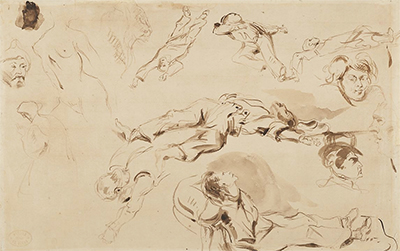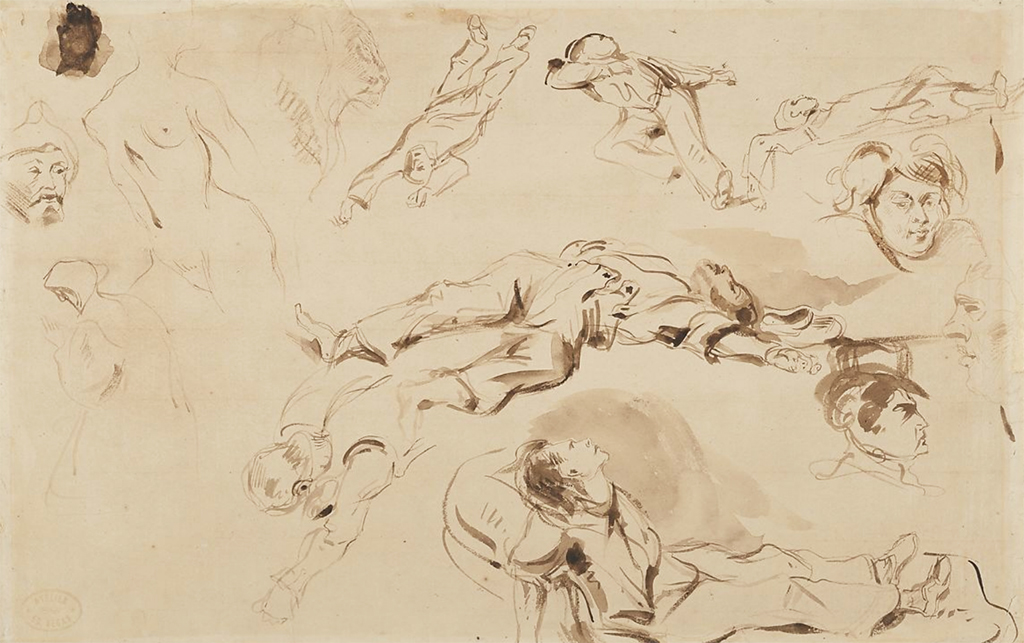This series of sketches was produced in 1830 in preparation for one of the artist's most famous paintings, Liberty Leading the People.
We find here a number of figures strewn across the floor and these were early versions of the same people added to the foreground of the later painting, which itself was completed in the same year. Delacroix loved to depict scenes of battle and war and found that the deep emotions from it were ideally suited to his painting style. Liberty Leading the People and Raft of the Medusa are considered by many to have been the most important paintings found in the entire Romanticist movement, though other notable pieces included Fighting Temeraire, The Hay Wain and also Wanderer above the Sea of Fog - they were all stunning pieces, no doubt, but Delacroix's contribution also holds a deep connection with his native French population, because of the moment that it represented in their collective history.
The final painting was unveiled at the Salon in 1831, and captures the July Revolution of 1830. If you pay a close attention to both the drawing and the painting, you should be able to see how figures were re-used in the final piece. They are collected together in the foreground, lying in the shadows as the tri-color flag is held up in glory. Delacroix would surely have completed simiar studies of the standing figures in the background too, but the overall preparation drawings are now dispersed across many different collections, with some no doubt have since been lost or destroyed. A greater focus has gone into artist's drawings in recent years, with the public interested to learn about the working processes of these great masters. Indeed, many consider Delacroix to have been the very last old master, after initially studying the work of those who came before, such as Raphael and Titian.
As with many of his expressive drawings, Delacroix here would use pen for precision, followed by wide brushes over the top which would add definition. There are also some areas of wash that were added around some of the figures. The facial features here are relatively low in detail, perhaps he was looking for broad ideas and expressive forms, before then later going into greater detail on individual figures once he was more confident about the final overall composition that was to be delivered in oils. It is now in the Louvre, and amongst the most famous French paintings in history. Some academics who have studied these original drawings have claimed that some of them may have been drawn from memory rather than direct observation, which is very likely because of the amount of time spent by the artist in previous years where he would copy prints by hand many times, essentially committing technical skills into his memory banks so that creativity could then be concentrated on in future sketches.





